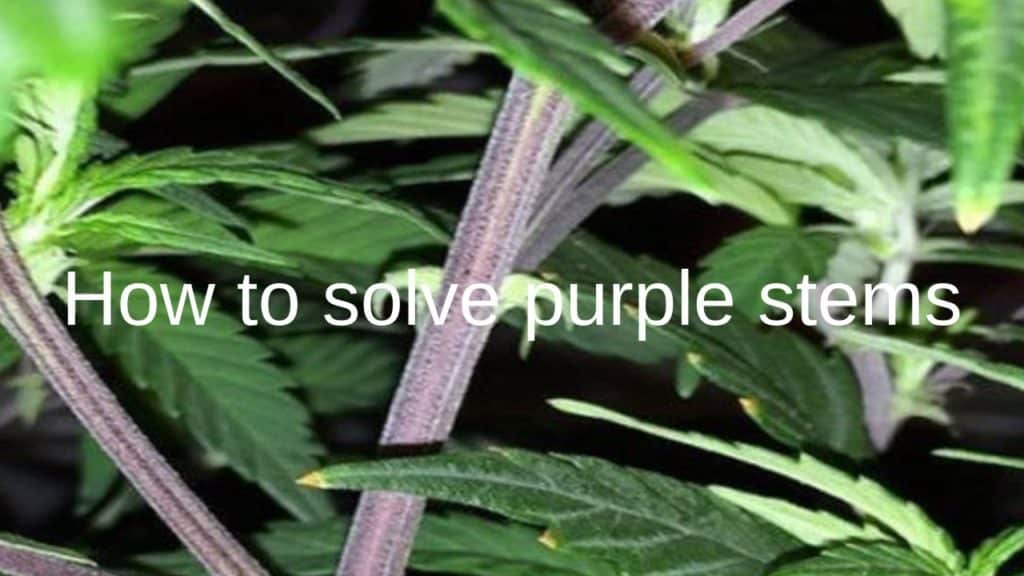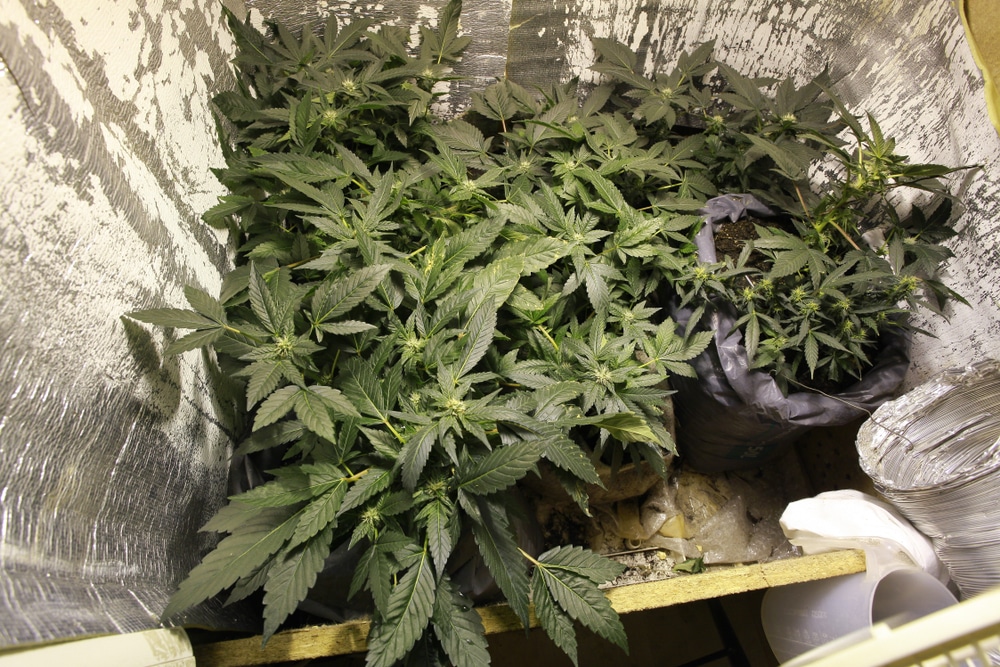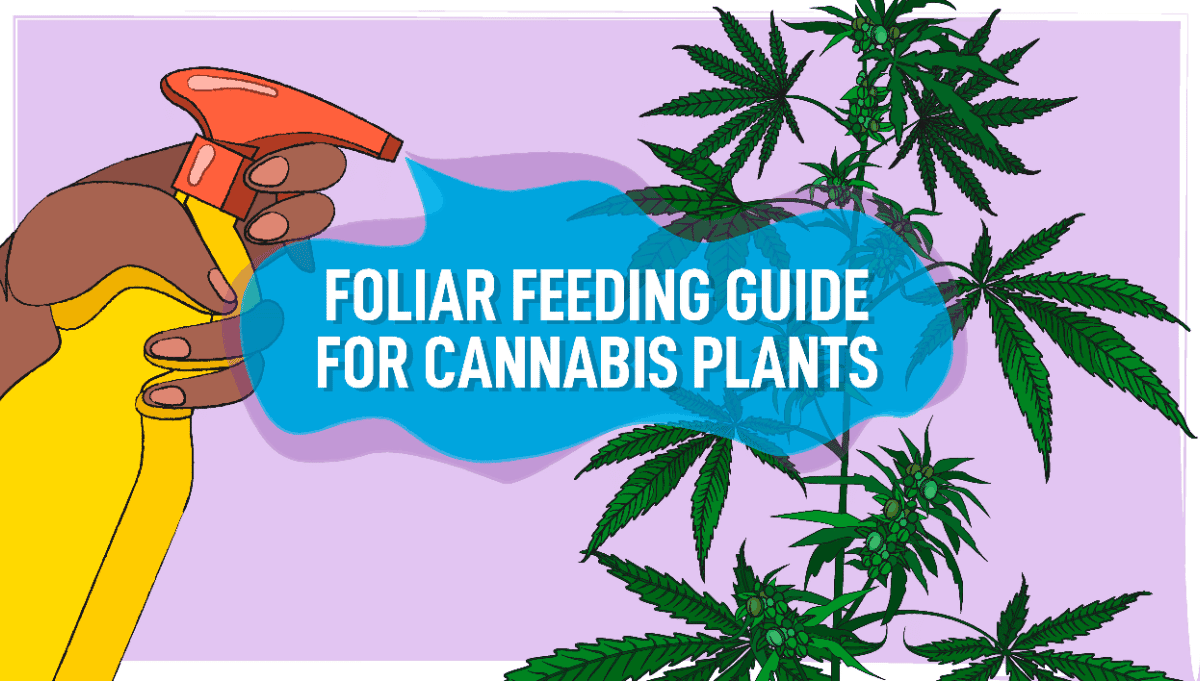No products in the cart.
Marijuana Education
Best Ways to Deal With Purple Stems Weed | Our Guide
Cannabis farmers are most times stunned to find purple colors on their weed stems rather than the conventional woody look the plants take. In some very severe cases, we often see the younger stems, as well as the petioles of the plants, form purple from the beginning. For older plants, you will see purple colors at the down of the plant. Purple stems weed and leafstalks are usually not things to bother yourself about, even though they signal a problem. Popular marijuana plants like Purple haze and purple punch plants are notable for having purple stems at some stages of their growth process.
Healthy plants are not excluded here, as they will sometimes have a purple color while others of the same crop will have none. This issue is not popular with clones, however, you can have purple stems weed among variations of your plants even when they are from the same batch of seedlings. For feminized cannabis seeds, it is possible to have some with purple colors and others without.
If not caused by genetics, purple stems weed is sometimes caused by nutritional imbalance and other cannabis-related problems. In every case of purple stem on weed plants, there are noticeable signs that the plant requires attention.
Having a comprehensive knowledge of the causes of purple stems and how to deal with it, when it happens, will benefit you greatly. While purple stems are not things to lose sleep over, catching sight of them early will help you to save your troubled plants on time.
Anthocyanin
This refers to the condition of having purple tints in your plants, including the cannabis plants.
Flowers come in red, blue, and purple colors at times, for cannabis, however, the buds and flowers are usually green, owing to the vast percentages of chlorophyll they come with. This is not to say that sometimes cannabis plants cannot display purple colors, most of the common strains of marijuana available today have been crossed to develop purple buds.
Sometimes the purple notes of a cannabis plant often overwhelm the green color that is made possible by chlorophyll, Anthocyanin is responsible for this happening. You will see these flavonoids having a large presence in fruits such as blueberries, you will also find it in blackcurrants, a plant that is popular for its antioxidant composition.
You will find blue, and purple anthocyanin, as well as the red variation in most types of seeds, including CBD hemp plants. For cannabis plants that produce dominant purple shoots, their breeding composition is made to produce anthocyanin above flavonoids.
Genetics is mostly responsible for purple marijuana stems
While the brownest marijuana stems carry large quantities of chlorophyll, they as well contain a significant percentage of anthocyanin. In some cases, the level of anthocyanin is small enough that the effects are almost not noticeable in the blue-purple, and red colorings.
Some purple plant seedlings are bred to cultivate purple buds with a vast percentage of anthocyanin, with the stems showing signs of this surplus. This can happen at any phase of your growth cycle, however, the genetically influenced purpling is seen mostly in young plants and your recently grown plants.
Strains such as blue dream, which is not recognized for having drops of purple buds can be bred to develop purple stems. It is not only the amount of anthocyanin that makes this happen, other factors can produce a difference. For this reason, your plants don’t have to produce vast stashes of anthocyanin to develop purple stems at any point.
You will require a dose of patience here
It can be devastating to see a healthy plant develop purple stems, you have nothing to worry about when you see this. Where your purple stems originate from a genetic factor, you don’t have anything to do in this regard.
Your best option will be to wait for a while and investigate your plant to look out for unusual indications that may happen. Where the plant proceeds with developing at its usual place and in line with the schedule, you can best write off the purple stems as an expression of the plant’s genetics and nothing more.
While you wait and watch for these symptoms, it is crucial to ensure your weeds are following through with other requirements to maintain their perfect health. Some other factors that can facilitate the advancement of purple stems in healthy cannabis plants are:
A breakdown of anthocyanin and temperature rise
plants left at the low edge of a reasonable growing spectrum can amass more anthocyanin than others. Similarly, the plant’s genetic anthocyanin levels should be best maintained at a temperature that supports regular growth.
The tissue pH level of plants
increased pH levels of plants, can reduce anthocyanin and contributes to an excess of Anthocyanin within your stems. Also, genetics and the natural ability of healthy plants to sustain specific balance will offset pH-induced impacts on the anthocyanin degrees of your stems.
The light range and quantity
finally, increased exposure to short light ranges has been demonstrated to facilitate anthocyanin proliferation in plants, other than marijuana. It is agreed that growing lights with blue and UV lighting, can give rise to the development of purple stems. Also, subjecting marijuana plants to light and not allowing them to rest adequately can aid the development of purple stems.
Things to do if purple stems interfere with plant development
It is not out of place to check your plant’s temperature, lighting, and pH level as you wait on other indications of trouble with your purple stem. If there is anything other than genetics that will be responsible for your purple stems, then it has to be a nutritional shortage. And one of such nutritional shortages will be phosphorus deficit, this can be recognized by:
Growth inhibition
Marijuana plants lacking phosphorus, usually have issues with their buds and root scheme. Where shortage of phosphorus is the sole reason for purple stems in your plants, you will notice that your plant growth is slowed. This inhibition of growth owing to phosphorus decay will be the first noticeable point, long before your stem and leaves begin to show signs of trouble.
For older plants, you will experience lower leaves. Also, phosphorus is transferable within your cannabis plants and it gets transported to where it is needed each time. Plants with phosphorus decay will give priority to its youngest leaves when it is distributing its supply. For the older leaves, they will first show the indications of stress, as they will shine more and often become dark. Sooner than not, they will tend to develop brown and purple spots, which will grow and multiply over time. Finally, these leaves will thicken and become dry, allowing for necrosis to take place.
The importance of phosphorus to plants makes its decay or absence almost noticeable for the yield intended grower. For phosphorus decay that is noticed on time, resolving it is also easy. It is best to keep an eye on the following issues:
Medium pH
Where the pH of your plant increases too high, the plant will have difficulty absorbing adequate phosphorus. Using a pH-balanced nutrition solution to flush your growing medium can solve this issue at a go. It will as well eliminate the proliferation of zinc and iron which can contribute to phosphorus shortage in plants.
Temperature
While low temperature can facilitate the proliferation of purple anthocyanin in stems, it can as well decrease your plant’s ability to absorb phosphorus. Keeping your marijuana plants warm can help them restore their phosphorus balance.
Watering issues
When your soil is oversaturated due to excessive watering, your plants will develop phosphorus decay. Proper watering will prevent this and other related problems.
Root condition and structure
Plants with unduly determinate root conditions will have issues taking in phosphorus, which is needed for them to thrive. Similar root issues can make things complicated for your marijuana plants, to take in phosphorus as they require.
Magnesium shortage
Marijuana plants make use of micronutrients to metabolize and successfully transport phosphorus. While magnesium is not required in large quantities for marijuana plants, a shortage of magnesium can constrain phosphorus availability in plants.
Use phosphorus supplements
Where nothing seems to work, add some phosphorus supplements to your plant growing climate, only when a phosphorus decay is observed. Going overboard here can give birth to burning or plant lockout.
Where phosphorus decay is the reason for the advancement of purple stems in your plants, using these listed solutions will better your plant’s prospects, and it works in almost all cases.
It is best to wait and observe your plants for different symptoms after they must have developed purple stems, you can as well use this time to monitor the plant growths and ensure that things such as pH level, temperature, and light are in order.
Conclusion
While the appearance of purple stems weed can take you by surprise, you don’t have to lose sleep on this. Coming to terms with how your strains evolve, will make it easy for you to identify when your stems are having a problem that needs your attention.






